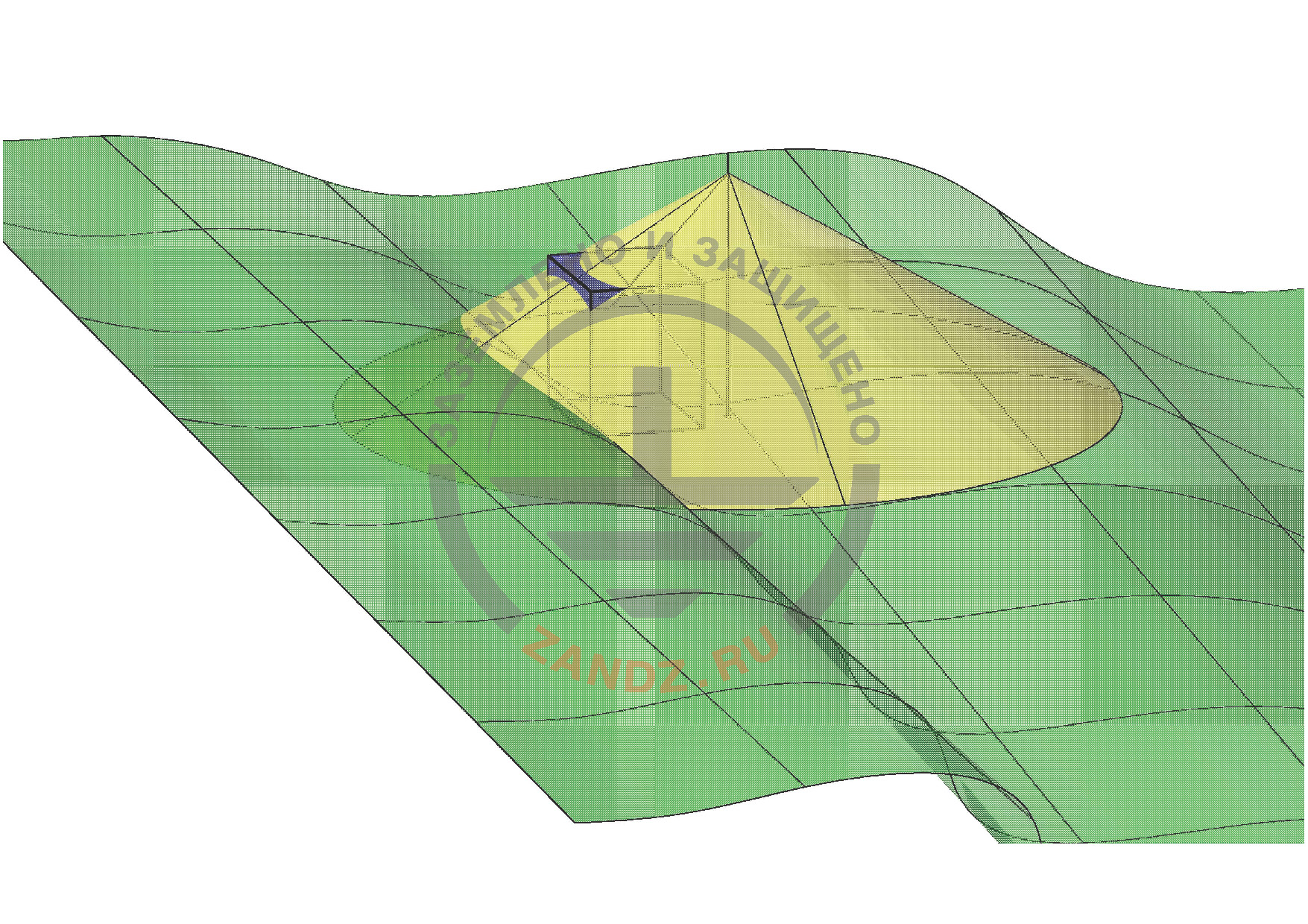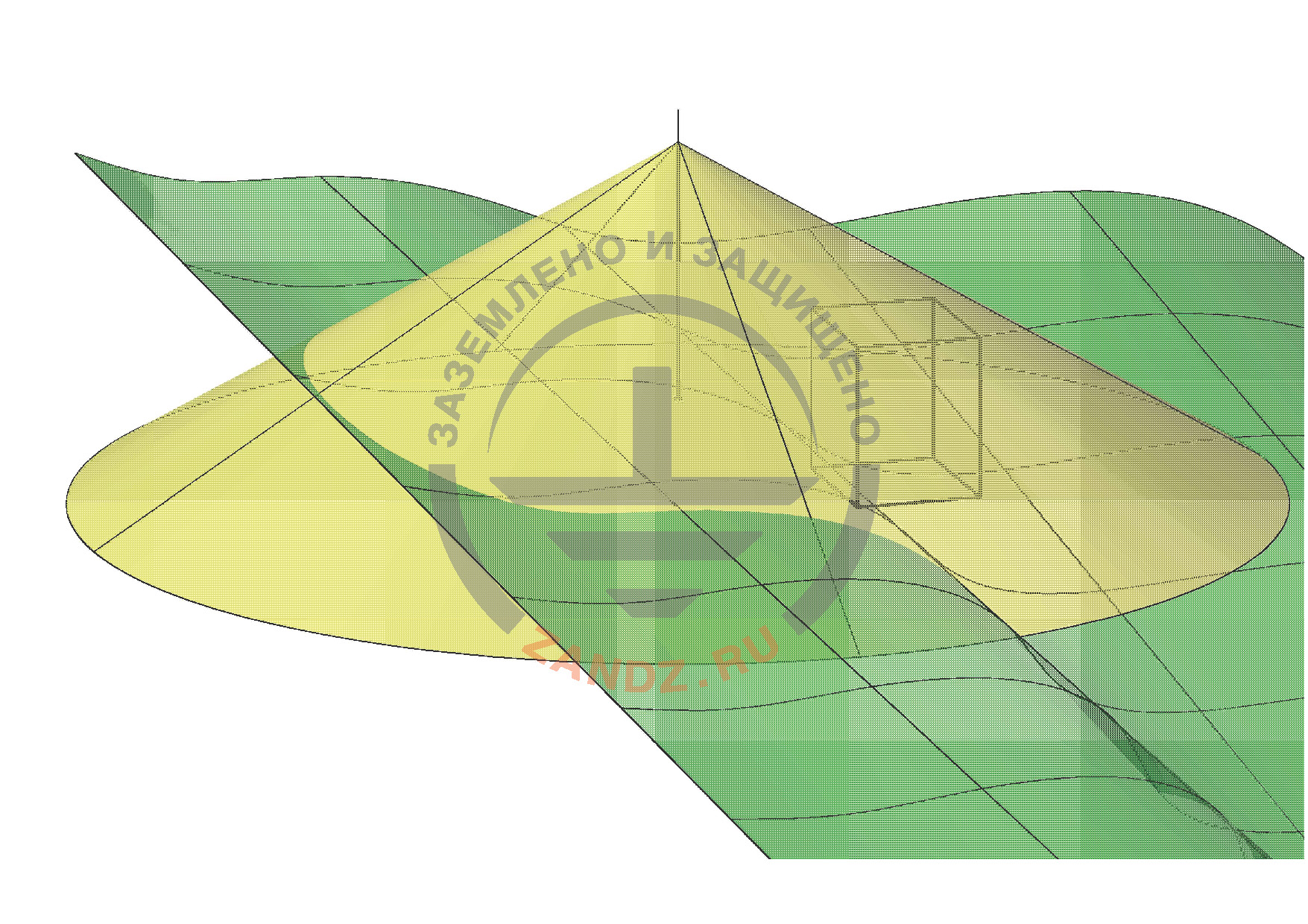ZANDZ Technical Center shares its secrets of correct lightning protection design
Expert lightning protection designers use any chances to optimize the number of equipment at the expense of a good layout. In order to do that, it is necessary to research the natural and artificial object environment. Land configuration is one of the most important factors.
Figure 1. Lightning rod is installed on a plateau
Having studied the bench marks on a topo survey, it is possible to find good points for locating lightning rod (usually on a hill), so it would cover the great area with its protection zone. And vice versa, if you don't know the landscape very well, you can make a mistake with the location of the lightning rod in the result of what this object won't be protected. We advise you to study the project initial data in order to use all available chance to improve the design quality.
Figure 2. Lightning rod is installed on a hill
We see a lightning rod of the same height in Figures 1 and 2. Installing it on a hill, you can achieve a complete protection of the building. The same rod installed on a plateau will only partially protect the building.
Trust ZANDZ Technical Center to design lightning protection and grounding. We will thoroughly study all information about the object and will offer the best solution.
See also:



